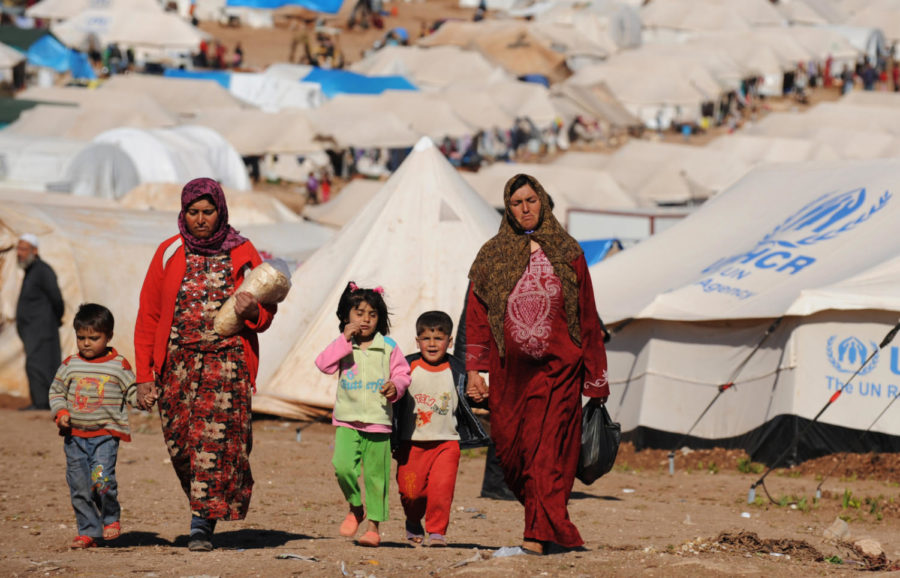The Ongoing Syrian Refugee Crisis
Syrian internally displaced people walk in the Atme camp, along the Turkish border in the northwestern Syrian province of Idlib, on March 19, 2013. Photo provided by: Bulent Kilic/Getty Images
According to Mercy Corps, Syria continues to have the largest amount of displaced citizens in the world. After war erupted in March of 2011, one-million people were forced out of the country, and an additional million people soon followed in the next six months.
Seven years later, more than half of the original population is internally displaced while others have fled to neighboring countries to escape the Syrian civil war. Now, an estimated 11 million citizens are on the run and 6.3 million citizens have crossed the border.
Lebanon has hosted over a million refugees and they now consist of one-fourth of the Lebanese population, as attested by CNN. Despite the large number of refugees, Lebanon has refused to allow relief groups to establish refugee camps out of fear that the camps will become permanent establishments that the government will have to support. This is unlike the situation in Jordan and Turkey, where camps are currently more welcoming.
Zaatari is the largest Syrian refugee camp in Jordan, and the camp is evolving into a permanent settlement. It was first established on July 28, 2012. By March 26, 2015, 83,000 Syrian refugees were hosted in Zaatari.
Zaatari consists of market-like structures along the main street where goods such as, vegetables, basic household equipment and clothes can be purchased. However, the camp has seen an increasing amount of crime being committed, including prostitution, drug-dealing, and violence. Some government officials are not enforcing laws to stop crime.
According to the DW, some camp guards that are assigned to protect the refugee camps are motivating young children to earn money by taking part in these crimes. In April 2014, a riot resulted in a number of injuries including one refugee killed and some Jordanian police officers injured by an armed weapon.
Syrian refugees are also immigrating to Turkey. However, Turkey’s immigration office has made plans to close down their camps for refugees, leaving more than 34,180 registered refugees homeless. The Syrian refugees will be forced to move to camps located in towns close to Turkey’s Syrian border. This will displace a large population of Syrian families and render them homeless. The families will have to rebuild their homes and search for new jobs.
This idea to close camps began with Turkey’s President Recep Tayyip Erdogan. Before the 2018 presidential elections in Turkey, the president said his goal was “to make all Syrian lands safe, starting from areas near our border, and to facilitate the return home of all our guests.”
These changes will take place in the month of Oct. and are expected to cause an uproar among members of the Syrian refugee community.
The Middle East is not the only one making changes. United State’s Secretary of State, Mike Pompeo, has decided to limit the influx of refugees to 30,000 per year. It will be lowest amount since the passage of the Refugee Act of 1980.

















































































![Senior Ditch Day... Relaxation or Truancy? [Video]](https://achsstinger.com/wp-content/uploads/2017/10/IMG_7119-900x599.jpg)
![Heavy Rain Hits Cam High [video]](https://achsstinger.com/wp-content/uploads/2017/02/maxresdefault-900x506.jpg)



